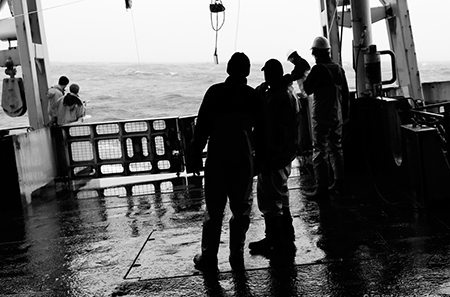 Researchers found that deep winter mixing plays the most important role in transporting iron to the surface
Researchers found that deep winter mixing plays the most important role in transporting iron to the surface
Scientists at the University of Liverpool have found unique aspects of iron cycling in the Southern Ocean which will better inform scientists about the effects of climate change.
An international team of researchers analysed the available data taken from all previous studies of the Southern Ocean, together with satellite images taken of the area, to quantify the amount of iron supplied to the surface waters of the Southern Ocean.
Deep winter mixing
They found that deep winter mixing, a seasonal process which carries colder and deeper, nutrient-rich water to the surface, plays the most important role in transporting iron to the surface. The iron is then able to stimulate phytoplankton growth which supports the ocean’s carbon cycle and the aquatic food chain
They were also able to determine that following the winter iron surge, a recycling process is necessary to support biological activity during the spring and summer seasons.
“This is important because iron limits biological productivity and air to sea CO2 exchange in this region. We found unique aspects to the iron cycle and how it is supplied by physical processes, making it distinct to other nutrients.
“This means that the Southern Ocean’s nutrient supply would be affected by changes to the climate system (such as winds and freshwater input) differently to other areas of the ocean.
“We need to better understand these unique aspects so that they can be used to better inform global climate predictions.”
Deep iron reservoir
Dr Jean-Baptiste Sallée, from the Centre National de la Recherche Scientifique and the British Antarctic Survey, said: “We are really excited to make this discovery because until now we didn’t know the physical processes allowing iron to reach the ocean surface and maintain biological activity. The combination of strong winds and intense heat loss in winter strongly mixes the ocean surface and the mixing reaches deep iron reservoir.”
The Southern Ocean comprises the southernmost waters of the world oceans that encircle Antarctica. Researchers have long known the region is crucial in the uptake of atmospheric CO2 and that biological processes in the Southern Ocean influence the global ocean system via northward flowing currents.
The research is published in Nature Geoscience and involves the British Antarctic Survey, Southern Ocean Carbon and Climate Observatory, Sorbonne Universites, CNRS, University of Tasmania, University of Cape Town, University of Otago, University of Tasmania.
